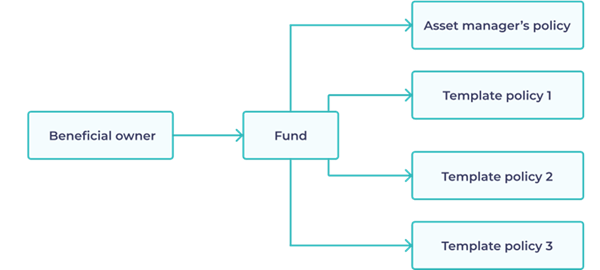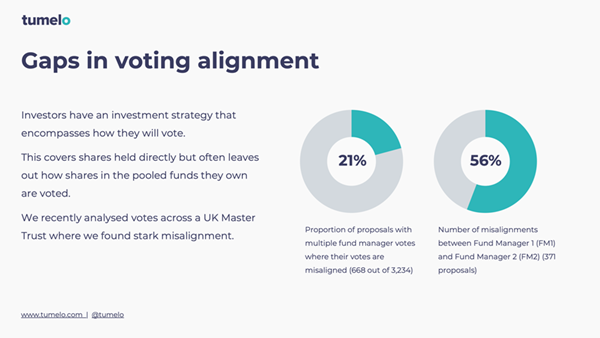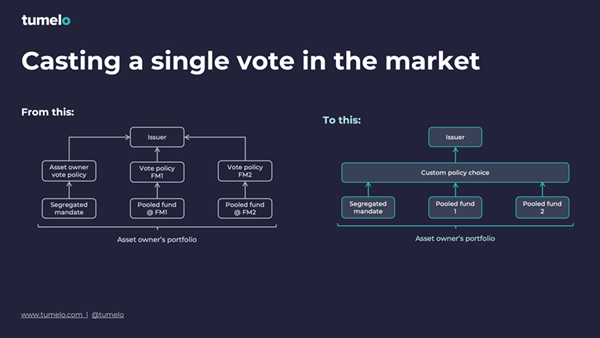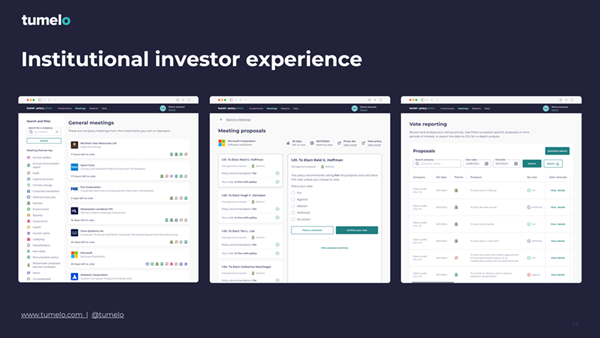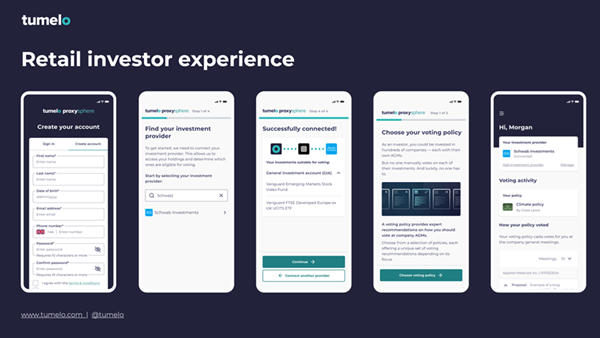|
Editor’s Note:
Will Goodwin is the Co-founder & Head of US Sales at Tumelo. This
post is based on his opening statement at an SEC IAC panel.
|
In June 2025, I participated in a panel hosted by the U.S. Securities
and Exchange Commission’s Investor Advisory Committee to discuss the
growing momentum behind pass-through voting and what it means for
investor empowerment.
The conversation brought together experts from across the governance
ecosystem, including Vanguard, EQ Shareowner Services, the Society for
Corporate Governance, and a renowned academic from the University of
Pennsylvania. Each of us explored how the proxy voting system is
evolving, and why giving clients a direct say in corporate governance
is no longer a fringe idea, but a fiduciary necessity.
Why investor choice matters
More than 50% of U.S. households own pooled investment vehicles —
mutual funds, ETFs, or closed-end funds.(1) That’s around 74 million
households or approximately 130 million individual investors.
If we believe corporate governance plays a critical role in how
companies operate today, then we must also believe that clients should
have a say in how that governance is executed.
The current state of proxy voting
Traditional flow:

Today, the typical process looks like this:
-
A beneficial owner invests in a fund.
-
That fund votes on behalf of all its
clients.
-
The asset manager makes voting decisions
according to its own policy.
This creates significant issues:
What pass-through voting changes
Pass-through voting introduces choice at the point of proxy
decision-making.
We move from:
Client
➝
Fund
➝
Fund votes on behalf of client
To:
Client
➝
Fund
➝
Client chooses how their shares are voted
At Tumelo, as a technology provider, we’ve seen several implementation
models tailored to different types of clients:
-
Policy selection:
Clients choose from a menu of voting policies, including the fund
manager’s default.
Example: Vanguard’s approach.
-
Custom-policy creation:
Clients build their own proxy-voting policies based on personal or
organisational principles.
-
Proposal-by-proposal voting:
Typically used by institutional clients who want to vote on
specific ballot items they care most about.
The principle is straightforward: It’s the client’s money,
therefore it is the client’s choice.
Solving real problems for institutional clients
From an institutional perspective, we’ve observed significant
misalignment between an asset owner’s investment strategy and how its
votes are cast in the pooled funds they use.
To address this, Tumelo offers a reporting solution that allows
clients to compare:
This often reveals discrepancies, which dilutes the impact of the
client’s investment strategy.
Enabling policy alignment across all assets
Pass-through voting solves this misalignment for asset owners.
Consider this simplified comparison:
-
Before: An
asset owner has a separate account (voted with their own policy)
and several pooled funds (voted by fund managers).
-
After: With
pass-through voting, the client’s preferred policy can apply to
all holdings —including pooled funds.
This alignment is essential. Without it, the client’s influence in
corporate governance is fragmented, undermining their ability to act
on their investment principles.
Customisation in practice
We’ve seen broad customisation among institutional and retail clients
that have adopted pass-through voting. Examples include:
-
Wealth managers seeking
alignment across pooled funds used in client portfolios.
-
Local Government Pension Schemes (LGPS) in
the UK such as LGPS Central, which votes over £12 billion under a
unified policy
-
Defined Benefit (DB) and Defined Contribution (DC) Corporate
Pension Schemes
which often take an issuer-focused approach,
selecting target companies based on size or strategic priority.
-
Retail investors making
a voting policy choice at the point of fund purchase.
Technology-enabled experiences
For institutional investors:
Tumelo offers a stewardship platform that enables:
For retail investors:
The focus is on transparency and education. The experience includes:
-
Connecting brokerage accounts.
-
Viewing how shares are voted under the
selected policy.
-
Holding policy providers accountable for
how votes are actually cast.
Growth of pass-through voting
We’re seeing strong and accelerating demand across the market:
-
We support multiple fund managers.
-
Over £200 billion in client assets
currently vote through our platform.
-
An additional £30 billion is in
onboarding.
-
We’ve identified over £1 trillion in
institutional assets interested in adopting pass-through voting,
but unable to access it — often because their fund managers do not
yet support the functionality.
Importantly, demand is not limited to passive funds. Clients expect
voting alignment across both passive and active portfolios.
Looking ahead
We believe pass-through voting will become a standard feature across
all pooled investment vehicles. Why? Because clients want
customisation, they believe voting control strengthens their
investment strategy, and for many, it’s now considered table stakes.
We envision a future where investors buying a fund through a brokerage
platform are immediately offered the chance to choose how their shares
are voted all from within the same user interface.
References:
1 Investment
Company Institute. (2023, October). Ownership of mutual funds,
shareholder sentiment, and use of professional financial advisers,
2023 (ICI Research Perspective, Vol. 29, No. 10). https://www.ici.org/system/files/2023-10/per29-10.pdf
|
Harvard Law School Forum on
Corporate Governance
All copyright and trademarks in
content on this site are owned by their respective owners. Other
content © 2025 The President and Fellows of Harvard College.
Privacy
Policy |

